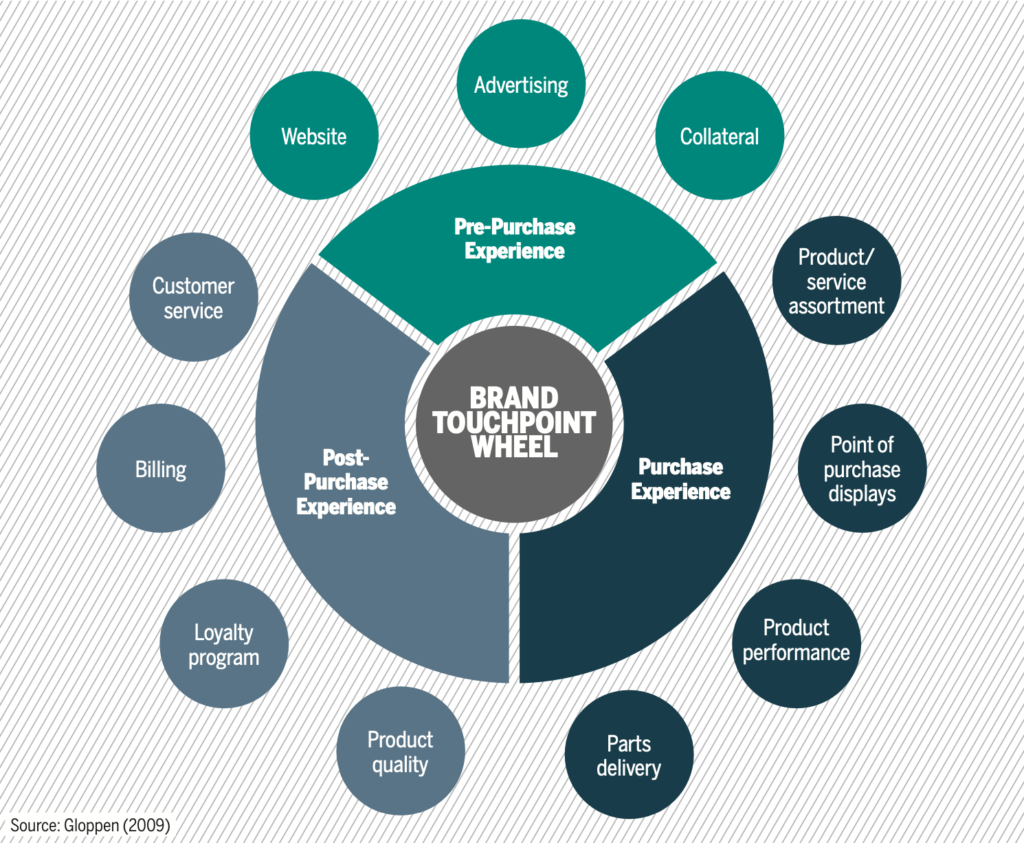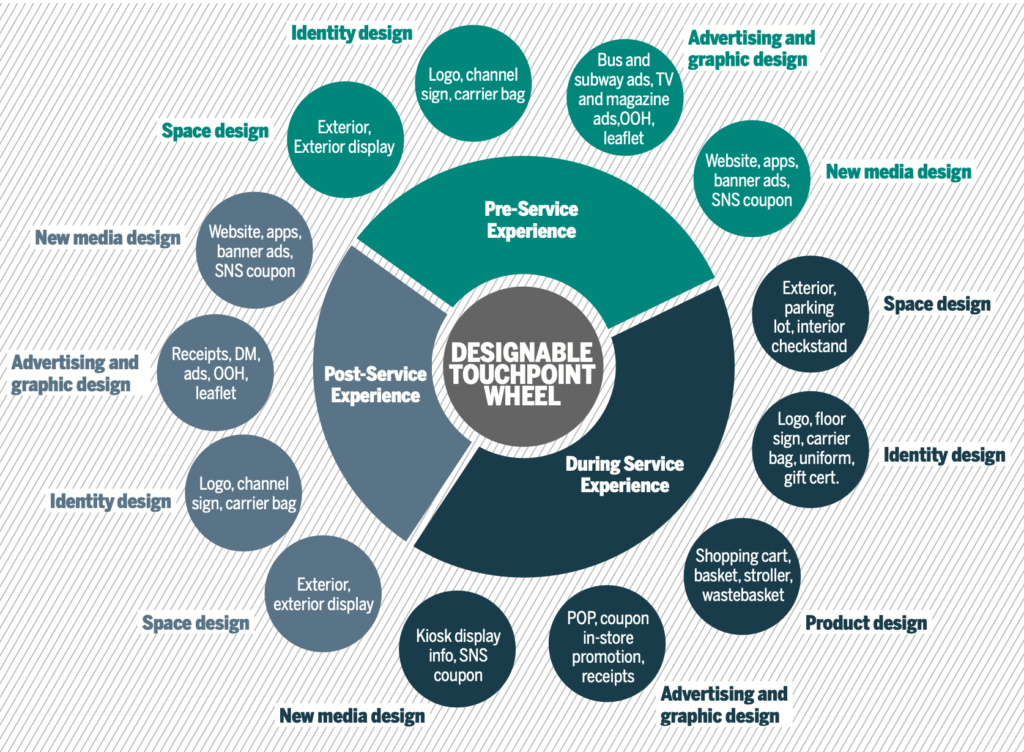Touchpoints are the various points of contact between a brand and the consumer. In order to design a connected consumer experience, all touchpoints should be coordinated (Nam, 2013). There are designable touchpoints, which are subject to design, and non-designable touchpoints, which are hardly designable, such as attitude and skills.
To orchestrate designable touchpoints, the brand touchpoint wheel should be considered.


The different touchpoints can be accessed through different channels and can be further classified by space design, product design, identity design, advertising and graphic design, and new media design. Space design is exterior, retail space, and product design refers to furniture, kiosks, and shopping carts. Identity design refers to logos, banners, and uniforms. Advertising and graphic design are parts such as brochures and newsletters. New media design is websites, social networking sites, and mobile apps. Users can encounter these touchpoints at pre-purchase, purchase, and post-purchase.
Before evaluating brand touchpoints in relation to their communicating behavior, the brand’s personality and values must be taken into account. To build a strong brand, the first step is to ensure identification of the brand with customers and make associations of the brand in customers’ minds (Keller, 2003).
References:
Keller, K. (2003) ‘Understanding brands, branding and brand equity’. Interactive Marketing, 5(1), pp.7-20.
Lee, K., Chung, K. and Nam, K. (2013) ‘Orchestrating Designable Touchpoints for Service Businesses’. Design Management Review, 24(3), pp.14-21.